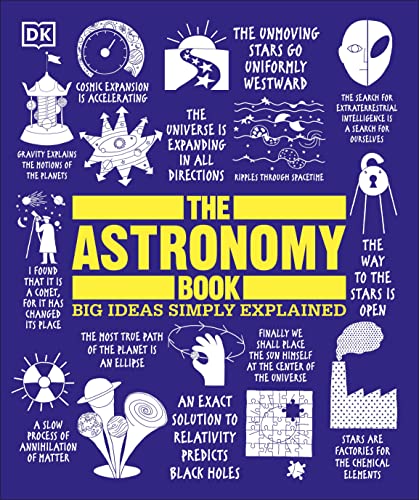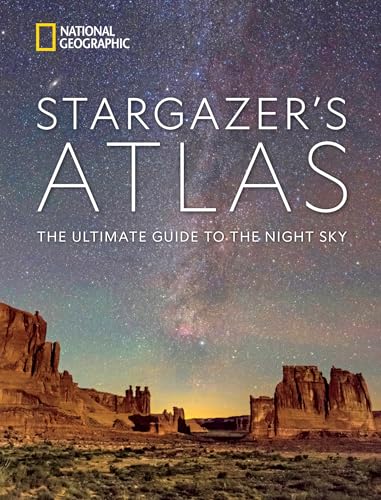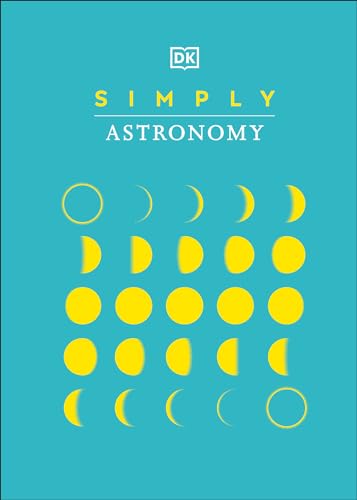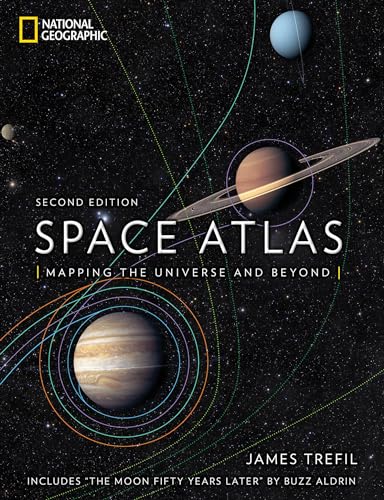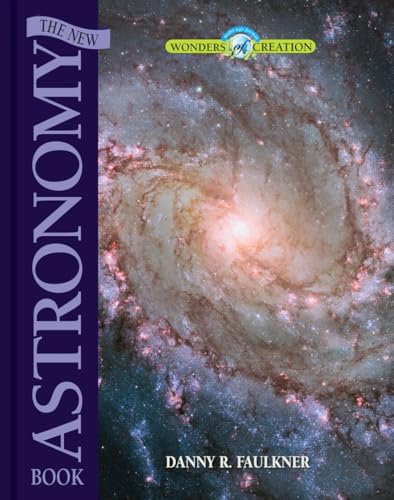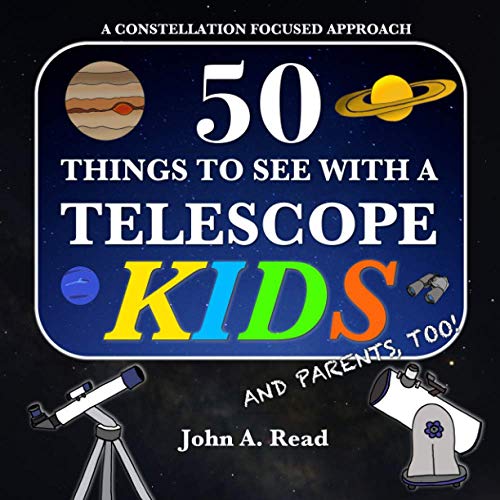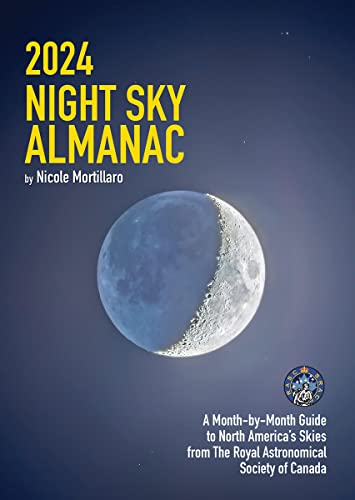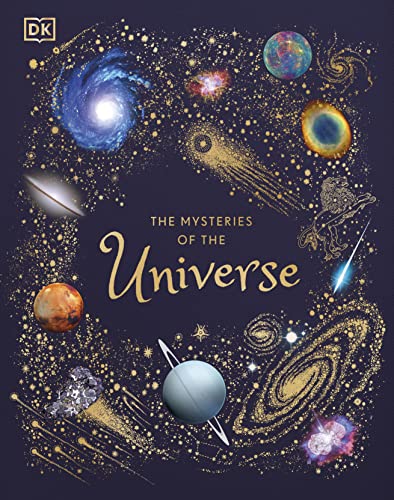Home>Gift Ideas>Astronomy Book Review: Unveiling the Wonders of the Cosmos
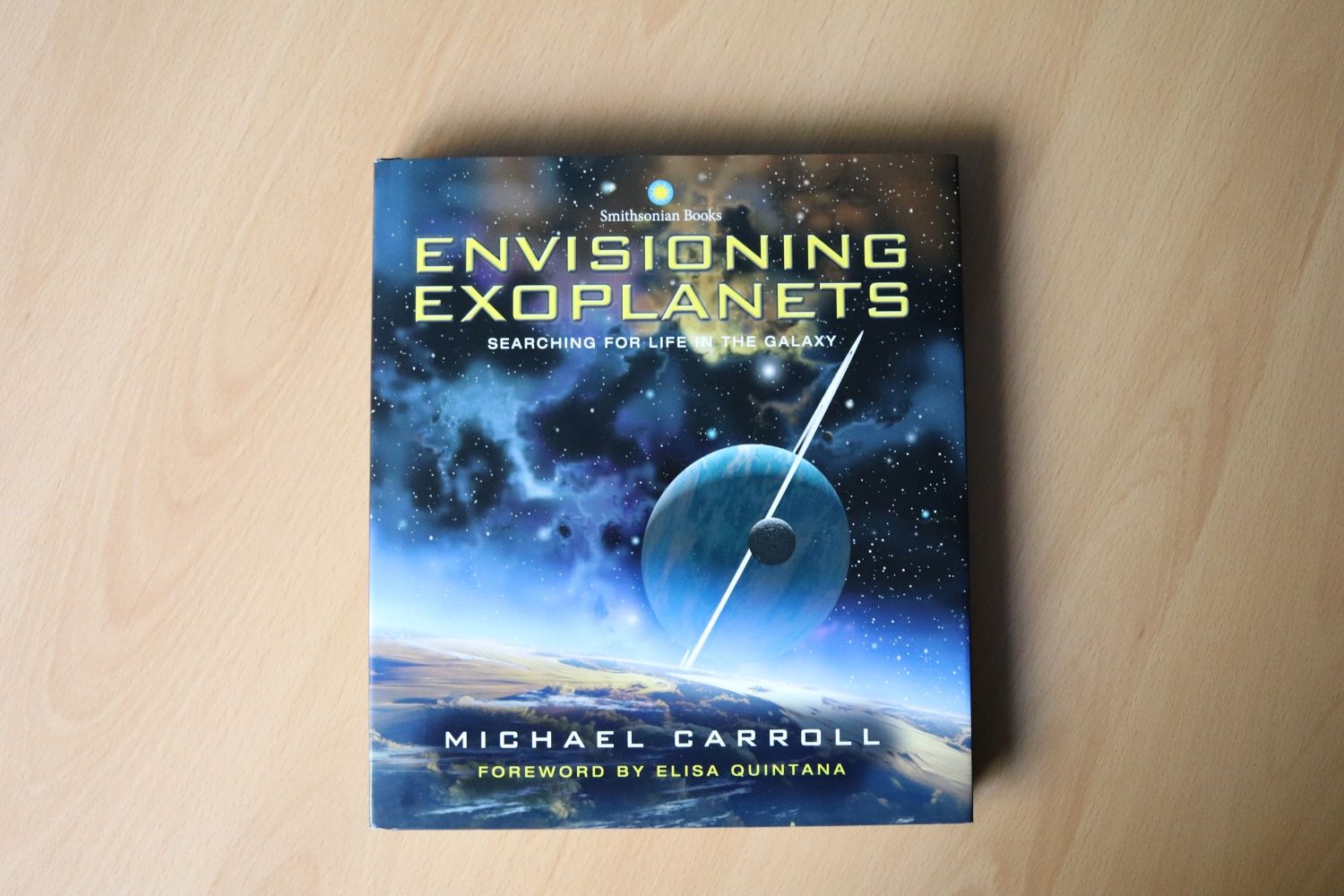

Gift Ideas
Astronomy Book Review: Unveiling the Wonders of the Cosmos
Published: February 19, 2024
Discover the captivating world of astronomy with our in-depth book review, exploring the wonders of the cosmos. Perfect for all astronomy book enthusiasts!
(Many of the links in this article redirect to a specific reviewed product. Your purchase of these products through affiliate links helps to generate commission for Giftslessordinary.com, at no extra cost. Learn more)
The "Astronomy Book Review: Unveiling the Wonders of the Cosmos" is an exciting and informative book that explores the mysteries of the universe. The author delves into topics such as stars, planets, black holes, and galaxies, providing a fascinating look at the cosmos. Whether you're a budding astronomer or simply curious about the world beyond our planet, this book is a great read for anyone interested in the wonders of space. So, grab a copy and prepare to be amazed by the beauty and vastness of the universe!
Overall Score: 8/10
The Astronomy Book is a big, heavy book that covers various historical aspects of astronomy. It's a well-organized resource that offers detailed information, appealing to a wide range of readers. With its accessible presentation and beautiful photographs, it makes a fascinating read for anyone interested in astronomy.
Key Features
- Useful for various age groups
- Detailed historical coverage
- Beautiful accompanying photographs
Specifications
- Color: Navy
- Dimension: 7.75Lx0.84Wx9.19H
Pros
- Covers a wide range of topics
- Well-organized and detailed
- Appealing to both novices and enthusiasts
Cons
- Some readers found it tough to follow
- May not suit readers looking for astrophysics-focused content
The Astronomy Book (DK Big Ideas) is a fascinating resource for anyone interested in astronomy. With its detailed historical coverage, accessible presentation, and appealing photographs, it provides an excellent learning experience for a wide range of readers.
Overall Score: 9/10
The National Geographic Backyard Guide to the Night Sky, 2nd Edition is a compact yet informative book perfect for beginners and intermediate stargazers. It offers a wealth of information about the night sky, the solar system, planetary bodies, moons, and constellations. With high-quality glossy color pages, it provides excellent organization and detailed images along with informative text. While some users found the small print size challenging, others praised its high-quality content and informative nature, making it an excellent resource for backyard astronomers or anyone interested in the night sky.
Key Features
- Compact and informative
- Perfect for beginners and intermediate stargazers
Specifications
- Color: Multicolor
- Dimension: 5.44Lx0.64Wx8.01H
Pros
- High-quality glossy color pages
- Detailed images and informative text
Cons
- Small print size may be challenging for some
The National Geographic Backyard Guide to the Night Sky, 2nd Edition is an excellent resource for anyone interested in stargazing. Despite the small print size, the high-quality content, detailed images, and informative text make it a valuable guide for backyard astronomers and stargazers at any level.
Overall Score: 9/10
The National Geographic Stargazer's Atlas is a comprehensive guide to the night sky. It is a large, hardcover book filled with stunning photographs, maps, and in-depth articles about astronomy. Although it may be too large and heavy for outdoor use, it is the perfect coffee table book for any stargazing enthusiast. The book covers a wide range of topics including constellations, deep sky objects, and cosmology, making it a valuable reference for backyard astronomers and space enthusiasts. The high-quality images and detailed information make it an excellent choice for anyone interested in exploring the wonders of the cosmos.
Key Features
- Comprehensive guide to the night sky
- Stunning photographs and maps
- In-depth articles about astronomy
Specifications
- Color: Grey
- Dimension: 10.75Lx1.25Wx13.90H
Pros
- Comprehensive coverage of astronomy topics
- High-quality images and detailed information
- Well-made hardcover edition
Cons
- Large and heavy, may not be suitable for outdoor use
- Size can be overwhelming for some readers
The National Geographic Stargazer’s Atlas is an exceptional resource for anyone passionate about stargazing and astronomy. Its detailed content and beautiful imagery make it an invaluable addition to any collection of astronomy books. While its large size and weight may not be suitable for outdoor use, it is an excellent reference for learning about the mysteries of the universe from the comfort of your home. Whether you’re a backyard astronomer or simply curious about the cosmos, this book is sure to spark wonder and fascination with the night sky.
Overall Score: 7/10
Simply Astronomy by DK Simply is a small, compact, and easy-to-understand book suitable for beginners and young readers. It features clear graphics and illustrations, making it an outstanding encyclopedia of the universe. The book serves as a great introduction to astronomy, with well-written content and simple language. However, some users may find it too basic, with hand-drawn illustrations and limited astronomical terms. The book's size and content layout make it suitable for younger readers, especially those interested in science and space.
Key Features
- Simple and easy-to-understand content
- Compact and travel-friendly size
- Clear and detailed graphics and illustrations
Specifications
- N/A
Pros
- Suitable for beginners and young readers
- Well-written content with simple language
- Compact size and appealing layout for younger readers
Cons
- Hand-drawn illustrations may not appeal to all users
- Limited astronomical terms and basic content
Overall, Simply Astronomy by DK Simply is a highly recommended introductory book for those interested in astronomy, especially young readers and beginners. While it may be too basic for some users, its compact size, clear graphics, and simple language make it a valuable addition to educational materials on space and science. It strikes a balance between being comprehensive and approachable, offering a great general overview of astronomy while maintaining an easy-to-read format.
Overall Score: 9/10
Explore the universe with the Space Atlas, Second Edition: Mapping the Universe and Beyond. This hardcover book in English is filled with beautiful photos and descriptions of the solar system and the universe. It covers the history of man's understanding of the universe, the solar system, the Milky Way galaxy, and the universe. The book is highly recommended for space enthusiasts and those looking to learn more about the cosmos.
Key Features
- Book: Space Atlas, Second Edition: Mapping the Universe and Beyond
- Language: English
- Binding: Hardcover
Specifications
- Color: Black
- Dimension: 9.50Lx1.60Wx12.20H
Pros
- Beautiful photos and descriptions
- Covers history of man's understanding of the universe
- Highly recommended for space enthusiasts
Cons
- Outer sleeve wear
- Pictures not in depth and informational
The Space Atlas, Second Edition is a captivating and insightful book that offers a detailed overview of the universe. Filled with beautiful photos, it is a great addition to any space enthusiast’s library.
Overall Score: 8/10
The New Astronomy Book (Wonders of Creation) is a beautifully detailed and informative book on astronomy, perfect for both beginners and those more advanced. The book presents information from a Christian perspective and includes biblical as well as scientific information. It covers a wide range of topics related to astronomy and is engaging with nice photos and three levels of learning for different age groups. However, some readers may find the presentation of theories as fact to be a drawback, and the inclusion of a young earth point of view may not be suitable for all readers.
Key Features
- Beautifully detailed book on astronomy
- Includes biblical and scientific information
- Engaging with nice photos
- Three levels of learning for different ages
Specifications
- Dimension: 8.75Lx0.50Wx11.00H
Pros
- Informative and engaging
- Includes biblical information
- Beautifully detailed with nice photos
Cons
- Some theories presented as fact
- Young earth point of view may not suit all readers
The New Astronomy Book (Wonders of Creation) is a comprehensive and beautifully detailed book that offers a wealth of information on astronomy from a Christian perspective. With its engaging presentation and three levels of learning, it is suitable for a wide range of readers, although some may find certain aspects to be contentious. Overall, it makes for a thoughtful and informative read for anyone interested in the wonders of the universe.
Overall Score: 8/10
The '100 Things to See in the Night Sky, Expanded Edition' is a comprehensive and user-friendly book that serves as an excellent starting point for anyone interested in stargazing. It provides an illustrated guide to the planets, satellites, constellations, and more. It is highly rated and praised for its beginner-friendly approach, making it suitable for novice astronomers and aspiring backyard stargazers. The book offers detailed information about the night sky, connecting the dots of constellations, and delving into the history and mythology behind them. However, some users have pointed out that it can be challenging to locate the constellations in the sky solely based on the book's guidance.
Key Features
- Beginner-friendly guide
- Illustrated constellations
- Historical and mythological context
Specifications
- Dimension: 8.25Lx0.90Wx9.13H
Pros
- Illustrated constellations and historical context
- Great for beginners and intermediate users
Cons
- Challenging to locate constellations based on the book alone
- Lacks reference points for finding constellations in the sky
The ‘100 Things to See in the Night Sky’ offers a wealth of information while maintaining a beginner-friendly approach. The illustrated guide to constellations, along with historical and mythological insights, adds an engaging and informative aspect to stargazing. However, users may benefit from additional resources for practical sky observation. Overall, it’s a valuable book for those venturing into the wonders of the night sky.
Overall Score: 8/10
This book, '50 Things to See with a Telescope – Kids', is an excellent resource for kids and parents interested in astronomy. It provides an easy-to-follow guide to sky observation and constellation mapping. The book includes beginner-friendly tips, a wide array of targets, and well-presented constellation maps, making it a perfect companion for using a telescope. With icons indicating target difficulty and viewing season, as well as tips for using binoculars, it caters to both kids and adults entering the world of stargazing. Measuring 8.50Lx0.17Wx8.50H, this highly-rated book, with a customer rating of 4.7/5, has received high praise for its educational and engaging content, making it a top choice for young astronomy enthusiasts.
Key Features
- Easy-to-follow format
- Beginner-friendly tips
- A wide array of targets included
- Well-presented constellation maps
Specifications
- Dimension: 8.50Lx0.17Wx8.50H
Pros
- Engaging for kids and parents
- Excellent educational resource
- User-friendly format
Cons
- May require adult participation for maximum benefit
The ’50 Things to See with a Telescope – Kids’ book is an engaging and educational resource for young astronomy enthusiasts. Its easy-to-follow format, beginner-friendly tips, and well-presented content make it an excellent choice for kids and parents interested in stargazing. Although some adult participation may be necessary for full comprehension, the book’s captivating approach to astronomy truly makes it a must-have for young stargazers.
Overall Score: 9/10
The 2024 Night Sky Almanac is a comprehensive month-by-month guide to North America's skies, authored by the Royal Astronomical Society of Canada. It is designed to help both amateur and experienced astronomers observe and understand the night sky. The book contains valuable information on celestial events and features, making it an essential tool for anyone interested in astronomy.
Key Features
- Comprehensive month-by-month guide
- Useful for amateur and experienced astronomers
- Valuable information on celestial events and features
Specifications
- Dimension: 5.88Lx0.31Wx8.25H
Pros
- Facile à consulter for French readers
- Great size for astrophotographer's kit bag
- Yearly tradition for Astro physicist
Cons
- None mentioned
The 2024 Night Sky Almanac is a highly recommended resource for all astronomy enthusiasts. With its detailed month-by-month guide and valuable insights, this book offers an excellent opportunity to explore and appreciate the beauty of the night sky. Whether you are a beginner, intermediate, or advanced astronomer, this almanac will undoubtedly enhance your stargazing experience.
Overall Score: 9/10
The Mysteries of the Universe: Discover the best-kept secrets of space is a visually stunning children's book filled with detailed information about the universe. Perfect for kids and adults, it features beautiful illustrations and easy-to-understand text. From stunning pictures to in-depth information, this book is a great addition to anyone's library.
Key Features
- Easy-to-read text
- Beautiful illustrations
- In-depth information
Specifications
- Color: Black
- Dimension: 8.75Lx1.13Wx11.31H
Pros
- Great for all ages
- Beautiful, quality feel
- Easy to read and understand
- Great illustrations and information
- Suitable for teachers and parents
Cons
- None mentioned
The Mysteries of the Universe: Discover the best-kept secrets of space is an exceptional book that is not only visually stunning but also filled with valuable and interesting information. Suitable for readers of all ages, it is a great addition to any library. With a high customer rating and a range of positive reviews, it is a must-have for anyone interested in space and the universe.
What to Look for in an Astronomy Book
- Subject Matter: Consider what specific aspects of astronomy you are interested in. Is it the history of astronomy, the study of celestial bodies, or the science behind the universe? Look for a book that covers your preferred subject matter.
- Accuracy and Reliability: Check the credentials of the author and the sources cited in the book. Ensure that the information presented is accurate and reliable. Avoid books with unsubstantiated claims or pseudoscience.
- Readability: Look for a book that is written in a clear and understandable manner. Complex scientific concepts should be explained in a way that is easy for a 10th grader to comprehend. Avoid books that are overly technical or filled with jargon.
- Illustrations and Visuals: A good astronomy book should include high-quality images, illustrations, and diagrams. Visual aids can help in understanding complex concepts such as the solar system, galaxies, and the cosmos.
- Exercises and Activities: Some books may include interactive exercises or activities that allow you to apply what you have learned. These can be helpful in reinforcing your understanding of astronomical concepts.
- Historical Context: If you are interested in the history of astronomy, look for a book that provides insight into the historical developments of the field. Understanding the evolution of astronomical knowledge can enhance your overall understanding of the subject.
- Real-life Applications: Consider how the content of the book relates to real-world phenomena or applications. Look for examples that connect astronomical concepts to everyday experiences or scientific discoveries.
- Comprehensiveness: Depending on your level of interest, you may want a book that covers a wide range of topics or one that delves deeply into a specific area of astronomy. Choose a book that aligns with your desired level of depth.
- Reviews and Recommendations: Before making a purchase, read reviews from other readers or seek recommendations from teachers, astronomers, or astronomy enthusiasts. Hearing about others' experiences with the book can help you make an informed decision.
- Future Reference and Continued Learning: Consider whether the book will serve as a valuable resource in the long run. Look for a book that can continue to be useful as you delve deeper into the study of astronomy and expand your knowledge in the future.
- Alignment with Curriculum: If you are using the book for educational purposes, ensure that it aligns with any specific curriculum or learning objectives.
Additional Tips
- Visit a local library or bookstore to browse through different astronomy books. This will give you a sense of the variety of options available and help you narrow down your choices.
- Consider exploring digital resources such as e-books or online platforms that offer interactive content related to astronomy.
- Don't be afraid to ask for recommendations from teachers, friends, or family members who have an interest in astronomy. They may be able to suggest books that have been particularly beneficial to them.
- Remember that learning about astronomy can be a fascinating and enriching experience. Choose a book that resonates with your curiosity and passion for the cosmos. Happy stargazing!
Frequently Asked Questions about Astronomy Book Review: Unveiling the Wonders of the Cosmos
The astronomy book covers various topics such as the solar system, constellations, galaxies, and the history of astronomy. You can learn about the different planets, stars, and other celestial objects.
Yes, the book is perfect for beginners who want to learn about astronomy. It explains complex topics in a simple and easy-to-understand manner.
Yes, the book is filled with colorful and detailed illustrations of planets, stars, and other celestial objects. You can also find beautiful photographs taken by telescopes and space probes.
Absolutely! The book includes information about space exploration, the International Space Station, and the history of space missions. You can learn about the fascinating journey of human beings into space.
Yes, the book has fun activities and experiments that you can try at home or in the classroom. You can make a model of the solar system, observe the phases of the moon, and learn about the different tools astronomers use.

